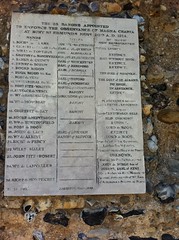I stumbled across Elizabeth Chadwick in a chance ‘I like the look of that cover” Waterstones moment and she has become absolutely my favourite historical author. I’ve read my way through all of her back catalogue and for the last year or more, all her new books (she is thankfully prolific!) have arrived on release date, either to my door or my Kindle. So far, every single one of her books has been fabulous, an enjoyable as well as an educational read and novels that have stretched my imagination and furthered my understanding of the history of England. From the Battle of Hastings onwards, she has a skill for bringing not only a cast of characters to life but also a landscape and a way of life. Aside from a few early ones, all her books feature real historical characters and events, tapestried together into an ever growing world of medieval England. Often books overlap, with characters from one popping up in another (as they would!) and often events are seen from one angle in one book and from a slightly different one in another.
There is a huge benefit to bringing characters to life in the way Elizabeth Chadwick does; even when characters have to be woven using subjective or intuitive ideas in order to create believable scenes and make a story, these historical characters become people and it is when you have an idea of a person, that it is possible to learn about them, remember them from one English Heritage trip to another and think about why they acted as they did. It was because of these books that I knew the history and the pressures on nearly all of these people, on our trip last week.
As an educator, someone trying to teach my children a real grasp of history, it is wonderful to be able to talk about these names as people to them and tell them the stories of their lives. Even allowing for the necessity for occasional creative licence with a personality, knowing the stories of 800 year old men and women makes for great days out. And as children of the Horrible Histories generation, being able to tell the story of the woman imprisoned so long she (maybe!) ate chunks from her dead son, is always going to please them!
Lady of the English is something of a triumph. It tells the story of Empress Matilda, who fought Stephen back and forth across England for a contested crown. It’s a confusing part of history at the best of times and a novel that teased out the complexities and laid bare the twists and turns of a bloody and grim civil war that is almost forgotten in today’s classrooms, seems very worthwhile. In that respect, it is excellent, easy to understand and a good insight into some forgotten history from the days well before succession in the monarchy was clear cut.
Far more than that though, the story of Matilda has been told incredibly skilfully, especially as she has already popped up in many of Chadwick’s other novels in her most common guise; that of a cold, hard and difficult woman who few found it easy to care for. Matilda has, inevitably, had the treatment that most strong women in history get – any strength is portrayed as unwomanly and dislikeable and she is generally seen as someone of few likeable traits who pulled England through war; Stephen, weak and malleable as he perhaps was, manages to avoid the tarnish of ineffectual monarch. Lady of the English utterly pulls this apart; while retaining all of Matilda’s well documented personality traits, a story and a concept has been created to explain why she was as she was and to make them admirable as well as daunting. The result is an entirely believable and interesting ‘other side’ to the story of the Empress and the world of women and men, treachery, loyalty and love that made up the intrigues of court life.
As ever, bravo!

I love books like this and get completely absorbed when I reading. My problem, much to my utter frustration, is that once finished I find the stories difficult to properly remember and end up just as ignorent of the timelines and characters in history that I was at the beginning.
Must see if the library has any as I’ve yet to read this series.
You are welcome to borrow 🙂 Actually, I have a similar issue and am just about to create a chart to link fiction, fact and characters into a timeline.
ooo would be interested in a chart – it would stay on my to do list until retirement otherwise!